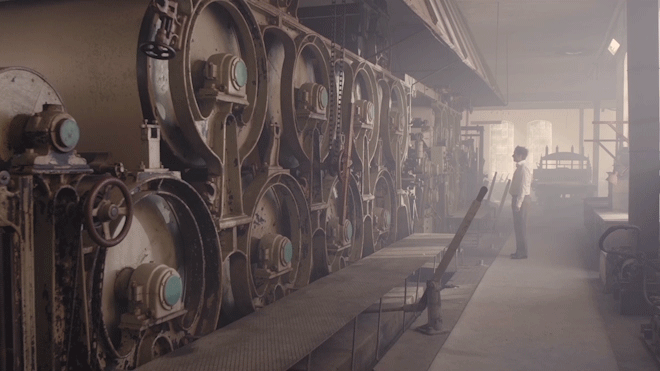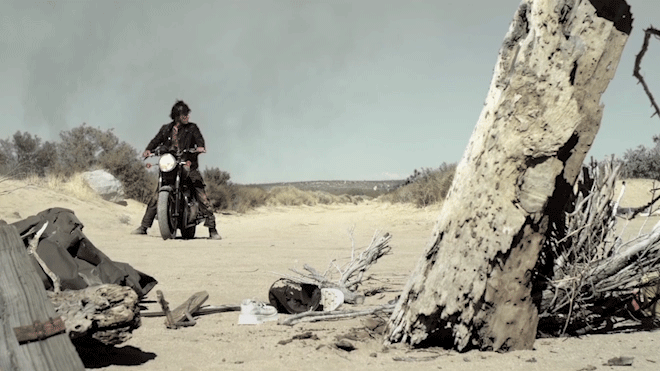Survivors confront sinister figures after time-compression event upheaves past into present.
Adrian Bobb‘s “The Fore-Men” emerges as a gripping exploration of time, space, and the haunting consequences of a mysterious event. Set in the aftermath of a perplexing time-compression incident, the film thrusts viewers into a world where past and present collide with unsettling consequences. As two survivors navigate the eerie landscapes shaped by this phenomenon, they come face to face with ominous figures, unraveling the sinister nature behind the event.
Bobb’s visionary approach to sci-fi storytelling captivates audiences with its blend of imagination and suspense. Drawing on his diverse background in paleontology, robotics, and filmmaking, Bobb delivers a visually stunning narrative that delves into the complexities of temporal distortion. With “The Fore-Men,” Bobb invites viewers on a thought-provoking journey through landscapes both familiar and otherworldly, prompting reflection on the nature of time and the unforeseen consequences of our actions.
“The Fore-Men” explores the concept of a mysterious time-compression event that splices environments from the past into the present. What inspired you to delve into this concept, and how did you approach bringing it to life visually in the film?
I’ve always been very interested in Paleontology ever since my father took me to the Royal Ontario Museum when I was 5 years old. The more I understood about the pre-historic Earth and its ever-changing surface and atmosphere, the more I would imagine what the space I occupied would look like if I could rewind time. And of course, the further you look back, the further you look forward. So wondering what forests would occupy the city streets I walk through, and what oceans would fill the highways I drive down became a daily daydream. Visually it was my knowledge of VFX that made me play around with the idea of “clipping” environments. What makes it difficult to incorporate CGI elements into a real environment is a mismatch in perspective, but if the story allows you to jam environments into each other, then perspective no longer matters…plus there’s something eerie about the real world crashing in a way similar to how the worlds in videogames can crash.
Your background includes work in paleontology and robotics engineering. How did these experiences influence your storytelling in “The Fore-Men,” particularly in depicting the geological eras and robotic elements present in the film?
I don’t actually have a background in robotics engineering, but I do have a background in Paleontology. Back in my 20s I did some work for two museums in Canada including the McGill Redpath Museum in Montreal where some of my displays for different specimens of dinosaur remain. While they’re very much in the corners of the film, I did enjoy sculpting the various lifeforms in the film including the obvious Pterosaur caught in the electric tower, to the 2 meter long milipedes in the flooded city at the end. When it comes to robotics my experience is entirely digital. Whether it was for my own films such as the short I made in 2019, E-X-T, or the robotic characters I’ve made for various films, games, and TV shows in the VFX world, I find I constantly sway back and forth between the mechanical and the organic especially because the complement each other so well. Knowing how biomechanics work helps me understand how regular mechanics work and vice versa. For the Fore-men themselves I wanted something that was unclear. A biomechanical creature that no longer recognized the dichotomy between synthetic and organic. There are parts that are obviously mechanical and parts that seem obviously organic, but most of it is a gradient where skin and muscle are indistinguishable from clothing and cables.
The film showcases haunting imagery and explores the darker side of the time-compression concept. Can you discuss the visual aesthetic and atmosphere you aimed to create, and how did you achieve this through cinematography and production design?
The keyword is “dead.” I wanted to create a world that felt sad and melancholy in that what was done to it was incredibly unnatural but also uncaring. The film’s original title was “The Mix” and it was an idea that a mix of all of Earth’s eras would be deadly for all forms of life. Whether through diseases both overcome or yet to come, various levels of atmospheric chemistry, or the obvious splicing of geography, I wanted a world that felt misplaced in time and our approach in this was to keep most of our shots locked off and indifferent (also an added boost in making VFX incorporation easier), and also frame both the extraordinary and ordinary similarly without any sense of glorification or denigration. From the fog machines used, to filming in Toronto Canada during late winter/early spring, I wanted something that felt mysterious, haunting, and ultimately uncaring.
“The Fore-Men” is a proof-of-concept short film. What aspects of the story or world-building were you keen to establish in this short format, and what potential do you see for expanding the concept into a feature-length project?
First and foremost I wanted to showcase something a bit different from other stories that deal with time manipulation. I wanted to do a story with people who look like me who knew enough about the world and about time to survive but not enough to overcome what’s clearly an unnatural event. I also wanted to invent a different kind of monster. Not an alien, or a robot, but a dark reflection of us. Something that could be iconic and represent our worst tendencies were to endure for another million years or so in our current trajectory. While I think we did that to a degree in the short, I feel we could really get something special in the feature version.
The characters in the film encounter foreboding figures responsible for the time-compression event. Can you delve into the development of these characters and their sinister nature, and how they contribute to the narrative tension?
The Fore-men are us in that they are our distant relatives millions of years in the future and they are absolutely meant to be terrifying and unnerving. But I didn’t want them to be evil in any obvious sense… just brutally indifferent with a moderate dose of arrogance and self-importance. My two main inspirations were Christian religious figures and Chernobyl-esque HAZMAT suits. It was also important for me to not change or alter their anatomy that far from the human body, so instead I focused on the exaggeration of features like the neck, a slightly vestigal ring and pinky finger, Larger feet with smaller vestigial toes, and clear signs of cultural and individual interests with the adornment of objects stollen, found, and collected. It took me about 2-3 months while writing the original short script to really narrow down the design and I will mostly likely do so again for the feature version!
How did you navigate the complexities of portraying time and space concepts on screen, and were there any particular challenges you faced in conveying the temporal storm and its effects?
While I will tackle the actual moment of this event in the feature version, I wanted to set the short weeks after it had already happened in order to give the audience a visual mystery to witness and to some extent “solve”. Plus compositing dead creatures into live action is a lot easier than compositing living ones!
Your previous short film “E-X-T” received acclaim and was featured in numerous festivals. How did your experience with “E-X-T” inform your approach to directing “The Fore-Men,” and what lessons did you carry over from your previous project?
E-X-T was an incredibly ambitious project that I learned a lot from as a filmmaker. Understanding the strengths and weaknesses of live-action vs. animation and the integration of both was a very difficult issue in that film and for The Fore-men I really wanted to do something that still provided interesting visuals but this time I wanted to do it more rhythmically like so many of the films I love did in the early 90s. Something that would hide as much as it would show. Something that built up to something but allowed the audience room to ponder when the credits rolled. Also something I knew I could do with half the budget and half the time :).
How did you strike a balance between science fiction and suspense in the storytelling, and what cinematic influences or inspirations did you draw from when crafting the narrative tone?
It wasn’t so much the science fiction elements, but the horror elements that really aided in the suspense of this story. In fact while not a huge fan of the horror genre, I recognize that in a lot of ways it is pure cinema. Knowing when to show and when to hide in my opinion is what film is all about. While more recent films like Annihilation, The Arrival, (and video games like) Death Stranding, The Last of Us, are big inspirations, more often than not I referenced Jurassic Park more than anything. That film has always been a favorite of mine but I think its success is in its ability to toe the line between awe and terror seamlessly and suspense is in many ways one of its greatest elements. The promise and delivery of spectacle is always more important than the spectacle itself, and that’s something I try to remember in everything I’ve made after E-X-T.
As a filmmaker, what do you hope viewers take away from “The Fore-Men,” both in terms of its entertainment value and any deeper themes or messages embedded in the narrative?
My first hope is always that viewers are emotionally affected by the film and feel that it was worth their time and attention but beyond that I hope that viewers take time to really think about our place in time. To try to understand just how much past and how much future surround and ultimately overwhelm us even on as small a scale (relatively) as the history of life on Earth. Time is one of those things we are always thinking about but rarely reflect on. It’s such a dense concept and I feel the story of The Fore-men is one that encourages reflection both on time’s horror and beauty equally.
Finally, can you tell us what are your favorite short films out there?
My top 3 are:
David Karlak’s The Candidate
Emily Dean’s The Very Pulse of the Machine
Controller – by Saman Kesh




